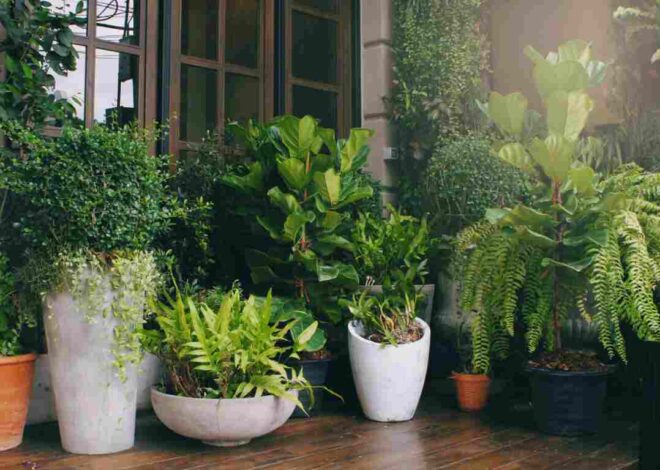
Unlocking Garden Potential: The Top Benefits of Using Mulch
Are you ready to take your garden from ordinary to extraordinary? Imagine a lush, thriving oasis where plants flourish and weeds are kept at bay. Enter mulch—the unsung hero of the gardening world! Whether you’re an experienced green thumb or just starting on your horticultural journey, incorporating mulch into your landscape can unlock a treasure trove of benefits that will leave your plants singing with joy. In this blog post, we’ll dig deep into the top advantages of using mulch, revealing how this simple addition can transform not only the health and appearance of your garden but also make maintenance easier and more enjoyable. So grab your trowel and let’s get started on this journey to discover the magic beneath those colorful layers!
Introduction to Mulch and its Purpose in Gardening
Gardening can be both a relaxing hobby and a rewarding pursuit. As you nurture your plants, one key element often gets overlooked: mulch. This unassuming layer of material might seem like just another garden accessory, but its benefits are profound and multifaceted. Whether you’re looking to conserve moisture in the soil or suppress pesky weeds, mulch is your silent ally.
Imagine walking through your garden and seeing vibrant colors blooming amid well-maintained beds. The secret? It could very well be the right type of mulch applied with care. In this post, we’ll explore the top benefits of using mulch and how it can unlock your garden’s true potential. Ready to dig into the details? Let’s get started!
The Top Benefits of Using Mulch:
Mulch offers a multitude of benefits that can transform your garden into a thriving oasis. One significant advantage is its ability to retain moisture in the soil. By creating a protective barrier, mulch reduces evaporation and helps keep your plants hydrated during dry spells.
Weed suppression is another major perk. A thick layer of mulch blocks sunlight from reaching weed seeds, preventing them from germinating and competing with your plants for essential nutrients.
Insulation is also crucial for plant health. Mulch acts as a thermal blanket, protecting roots from extreme temperatures—keeping them warm in winter and cool during hot summers.
Lastly, certain types of mulch enrich the soil as they decompose. This organic matter not only nourishes plants but also improves overall soil structure, promoting better drainage and aeration for healthier root systems.
-
Retaining Moisture in the Soil
One of the standout mulch benefits is its ability to retain moisture in the soil. When applied correctly, mulch acts as a barrier that slows down evaporation.
This means your plants can access water for longer periods. A well-mulched garden often needs less frequent watering, saving both time and resources.
Organic mulches, like wood chips or straw, break down over time. As they decompose, they enrich the soil while continuing to help with moisture retention.
Even during hot summer days, a layer of mulch keeps the ground cool and damp beneath it. This not only supports plant health but encourages deeper root growth as plants search for that precious water below.
Choosing the right type and thickness of mulch will further enhance its effectiveness in conserving moisture. Your garden will thrive while you enjoy reduced maintenance efforts.
-
Weed Suppression
Weeds can be a gardener’s worst nightmare. They compete for resources and space, choking out your prized plants. Applying mulch creates a barrier that blocks sunlight from reaching weed seeds.
This barrier significantly reduces their growth potential. As the layers of mulch settle, they suppress weeds while allowing air and moisture to penetrate the soil.
Organic mulches such as wood chips or straw break down over time, enriching the soil further. Not only do they prevent weeds but also promote healthier plant growth in the process.
With less weeding to worry about, gardeners have more time to enjoy their flourishing landscapes. It’s a win-win strategy that enhances both aesthetics and garden health without harsh chemicals or excessive labor.
-
Insulation for Plants
Mulch acts as a protective layer for your plants, providing essential insulation. This is especially crucial during extreme temperature fluctuations.
In colder months, mulch traps heat in the soil. It prevents frost from penetrating deeply and harming roots. A thick layer helps create a stable environment that encourages healthy growth even in winter.
During hot summer days, it shields plant roots from scorching heat. The insulating properties of mulch keep the soil cooler, reducing stress on the plants.
With proper insulation, you’ll notice more vigorous blooms and healthier foliage throughout the growing season. Your garden becomes a resilient ecosystem capable of withstanding weather extremes while thriving beautifully.
-
Adding Nutrients to the Soil
Adding nutrients to the soil is one of the often-overlooked mulch benefits. Organic mulches, like wood chips or shredded leaves, break down over time. This decomposition process enriches the soil with essential nutrients.
As these materials decay, they release nitrogen, phosphorus, and potassium—key elements that help plants thrive. Healthy soil means healthier plants with vibrant colors and robust growth.
Moreover, organic matter improves soil structure. It enhances aeration and drainage while promoting beneficial microbial activity. These microbes work tirelessly to convert organic materials into a form that plants can easily absorb.
Using mulch also helps reduce nutrient leaching during heavy rains. By covering bare ground, you minimize erosion and protect your valuable topsoil from washing away.
So when you’re mulching your garden beds, remember: it’s not just for looks; it’s an investment in your garden’s long-term health and vitality.
Types of Mulch and Their Specific Benefits:
When it comes to mulch, you have two main categories: organic and inorganic. Each type offers unique benefits that can cater to your garden’s needs.
Organic mulch includes materials like wood chips, straw, or shredded leaves. As these materials break down over time, they enrich the soil with nutrients. This not only promotes healthy plant growth but also improves soil structure.
On the other hand, inorganic mulch consists of stones, gravel, or plastic sheeting. These options are durable and effective for moisture retention while also providing a clean aesthetic look. They do not decompose but can be excellent at suppressing weeds.
Choosing the right type depends on what you’re aiming for in your garden—whether it’s enhancing fertility or simply maintaining visual appeal without frequent upkeep. Understanding these differences empowers you to make informed decisions tailored to your gardening goals.
-
Organic vs. Inorganic Mulch
Organic mulch consists of natural materials like wood chips, straw, grass clippings, and leaves. As they break down over time, they enrich the soil with nutrients. This not only improves plant health but also encourages beneficial microorganisms to thrive.
In contrast, inorganic mulch includes materials such as rubber or gravel. These don’t decompose and can last for years without needing replacement. While they effectively suppress weeds and retain moisture, they don’t enhance soil fertility.
Choosing between organic and inorganic mulch often depends on your garden goals. Organic options are great for improving soil quality while providing a more rustic look. Inorganic choices offer durability and low maintenance for areas where aesthetics may be less important.
Understanding these differences helps you make informed decisions tailored to your unique gardening needs. Each type has its benefits; selecting the right one can significantly impact your landscape’s success.
-
Choosing the Right Mulch for Your Garden Needs
When it comes to choosing the right mulch, consider the specific needs of your garden. Different plants thrive under varying conditions. For instance, if you have moisture-loving plants, opt for organic mulches like wood chips or straw that improve soil quality as they decompose.
On the other hand, inorganic options such as gravel or rubber can be excellent in drought-prone regions. They provide durability and require less maintenance over time.
Think about aesthetics too! Colored mulch can add a vibrant touch to your landscape while still serving practical purposes.
Lastly, ensure your selection aligns with local climate conditions. A good choice will not only enhance plant growth but also complement the overall look of your garden space. Take time to assess all factors before making a decision; it’s worth it for long-term success with your gardening efforts.
How to Properly Apply Mulch in Your Garden:
Applying mulch properly is key to maximizing its benefits. Start by clearing the area of weeds, grass, and debris. This ensures that your mulch can work effectively without competition.
When it comes to thickness, aim for a layer that’s about 2 to 4 inches deep. Too little won’t offer sufficient coverage, while too much can suffocate plant roots and retain excessive moisture.
Make sure to keep mulch a few inches away from plant stems or trunks. This helps prevent rot and provides air circulation around the base of your plants.
Avoid using fresh wood chips as they can leach nitrogen from the soil during decomposition. Instead, consider aged materials for better results.
Regularly check on your mulch layer throughout the growing season. Topping off any areas where it has decomposed will help maintain its protective qualities against harsh weather conditions and pests.
-
Thickness and Depth Guidelines
When applying mulch, thickness matters. A layer that’s too thin won’t provide the benefits you’re aiming for. On the flip side, a thick layer can suffocate your plants and lead to moisture retention problems.
A depth of 2 to 4 inches is usually ideal for most gardens. This range effectively retains moisture while suppressing weeds. Make sure not to pile it against plant stems or tree trunks, as this can encourage rot.
For perennial beds, aim closer to that 3-4 inch mark during application. In vegetable gardens, sticking with around 2 inches will allow plants enough air circulation while still getting those moisture benefits.
Always remember to refresh your mulch every few months. As it breaks down over time, maintaining proper thickness ensures ongoing protection and nourishment for your garden’s soil and plants.
-
Avoiding Common Mistakes when Applying Mulch
Applying mulch can be simple, but mistakes are surprisingly common. One major error is piling it too thickly around plant bases. This can lead to rot and attract pests.
Another frequent oversight is neglecting to prepare the soil first. Always clear away weeds and debris before placing your mulch down for optimal effectiveness.
Using the wrong type of mulch can also hinder your garden’s progress. For instance, applying inorganic materials in a vegetable bed might not provide the nutrients needed for healthy growth.
Don’t forget about moisture retention; it’s essential to leave some space between the mulch and plant stems. This allows air circulation while preventing moisture from getting trapped against sensitive areas.
Lastly, remember that mulching isn’t a one-time job. Regular maintenance ensures that you reap all the benefits without falling into these common pitfalls.
Creative Ways to Use Mulch in Your Garden:
Mulch can do more than just protect your plants; it can also enhance the aesthetics of your garden. Consider using colored mulch to create an eye-catching contrast against vibrant blooms. This technique adds depth and visual interest, making your landscape pop.
Another innovative way to use mulch is within pathways. Spread a layer of decorative stones or bark along walkways to provide both functionality and style. It helps define spaces while preventing muddy footprints indoors.
If pests are a concern, think outside the box by experimenting with mulching materials like cedar chips. Their natural oils can deter insects without harsh chemicals.
You could even repurpose old newspapers as mulch in vegetable gardens. Layer them beneath organic matter for effective weed control while promoting soil health through gradual breakdown.
Embrace these creative strategies to optimize the benefits of mulch in unexpected ways throughout your garden space!
-
Decorative Uses for Mulch
Mulch isn’t just functional; it can also be a stunning addition to your garden’s aesthetics. By choosing colored or textured mulch, you can create visual interest and enhance the overall design of your outdoor space.
Consider using decorative stones or bark in pathways to guide visitors through your garden. This not only adds beauty but also serves a practical purpose by preventing soil erosion and compaction.
Layering different types of mulch around flower beds can highlight particular plants, drawing attention to their unique colors and shapes. A dark mulch may make vibrant blooms pop, while lighter hues offer a soft contrast against lush greenery.
Don’t forget about themed gardens! Using specific mulches suited to certain styles—like natural wood chips for rustic designs or sleek pebbles for modern spaces—can tie everything together seamlessly. Let your creativity flow as you explore these decorative possibilities with mulch.
-
Using Mulch as a Pesticide Alternative
Mulch isn’t just a protective layer for your garden; it can also serve as a natural pest deterrent. Certain types of mulch, especially those derived from cedar or pine, contain oils that repel insects.
When you apply these mulches around plants, they create an aromatic barrier that pests find unappealing. This reduces the likelihood of infestations without the need for chemicals or synthetic pesticides.
Moreover, organic mulch breaks down over time, enriching the soil and promoting healthy microbial activity. Healthy soil leads to strong plants that are more resilient against pests.
Additionally, by covering bare ground with mulch, you minimize hiding spots for unwanted critters. This simple strategy not only protects your plants but also enhances overall garden health naturally.
-
Mulch is a gardener’s best friend how can help in garden
Mulch is a gardener’s best friend. Its many benefits offer invaluable support to plants and soil health. By retaining moisture, suppressing weeds, insulating roots, and adding nutrients, mulch creates an ideal environment for growth.
Choosing the right type of mulch—organic or inorganic—can further enhance your garden’s potential. Each type has its own unique advantages tailored to specific needs.
When applying mulch, following proper guidelines ensures effectiveness. A thickness of two to four inches typically does the trick without suffocating plants. Avoiding common mistakes like piling mulch against plant bases can save you from future trouble.
Embracing creative uses for mulch not only adds beauty but also functionality in your outdoor space. Whether as decoration or a natural pesticide alternative, there’s no limit to how it can benefit your garden.
With all these aspects considered, using mulch effectively allows your garden to flourish while minimizing maintenance efforts—a true win-win situation for any green thumb enthusiast!


